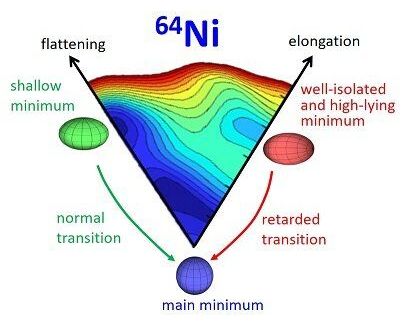Until recently, scientists believed that only very massive nuclei could have excited zero-spin states of increased stability with a significantly deformed shape. Meanwhile, an international team of researchers from Romania, France, Italy, the USA and Poland showed in their latest article that such states also exist in much lighter nickel nuclei. Positive verification of the theoretical model used in these experiments allows describing the properties of nuclei unavailable in Earth laboratories.
More than 99.9 per cent of the mass of an atom comes from the atomic nucleus, the volume of which is over a trillion times smaller than the volume of the entire atom. Hence, the atomic nucleus has an amazing density of about 150 million tons per cubic centimeter. This means that one tablespoon of nuclear matter weighs almost as much as a cubic kilometer of water. Despite their very small size and incredible density, atomic nuclei are complex structures made of protons and neutrons. One may expect that such extremely dense objects would always take spherical form. In reality, however, the situation is quite different: most nuclei are deformed—they exhibit shape flattened or elongated along one or even two axes, simultaneously. To find the favorite form of a given nucleus, it is customary to construct a landscape of the potential energy as a function of deformation. One may visualize such landscape by drawing a map on which the plane coordinates are the deformation parameters, i.e.
